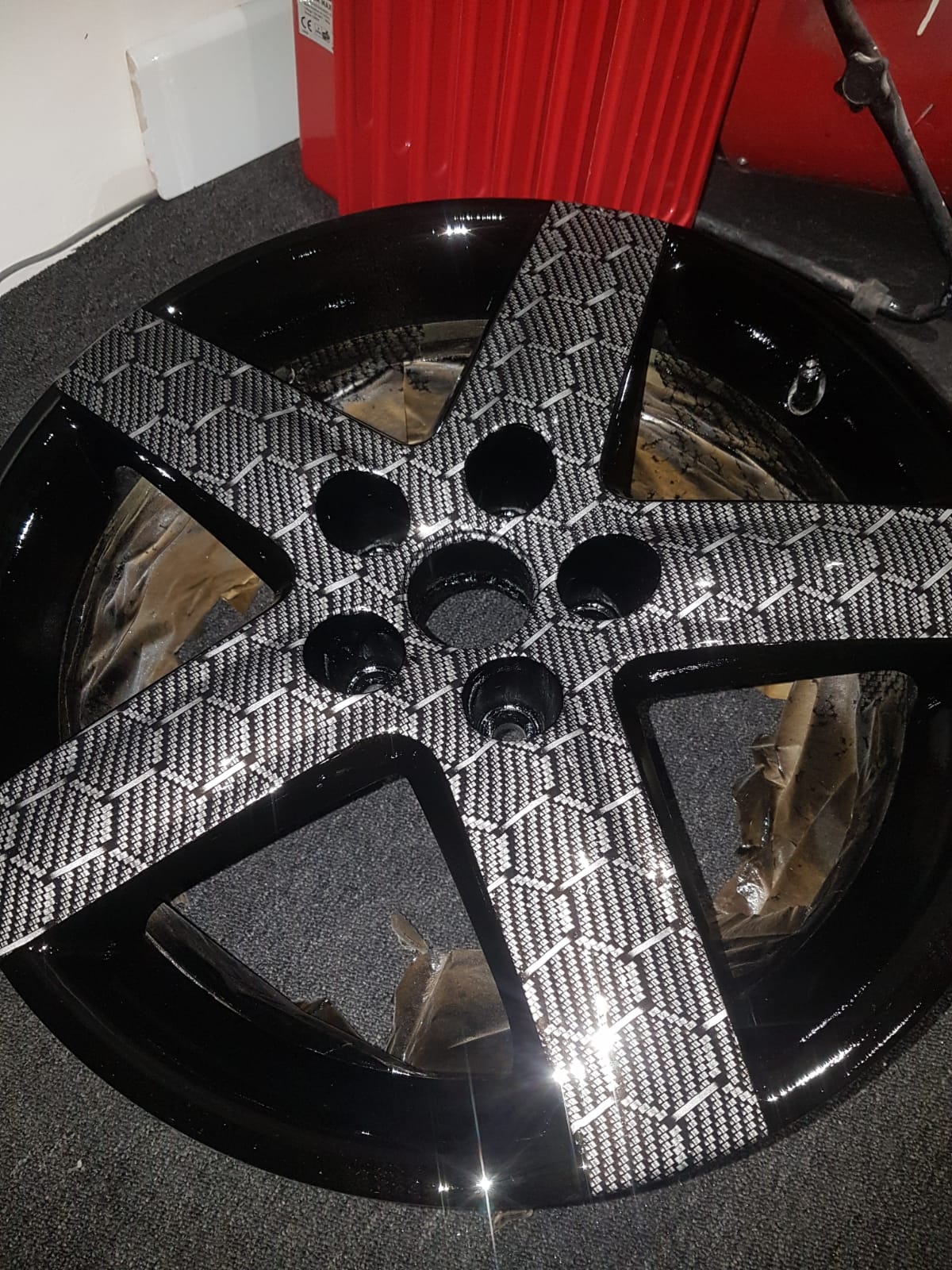Types of Alloy Wheel Refurbishment
Alloy wheel refurbishment is restoring alloy wheels to their original condition or giving them a new look. Over time, alloy wheels can suffer damage, including scratches, corrosion, and curb damage. Refurbishing these wheels can not only enhance the aesthetics of a vehicle but also improve its resale value. There are several alloy wheel refurbishment techniques, each suited for different levels of damage and desired outcomes. Let's explore some of these methods:
- Powder Coating: Powder coating is one of the most popular
methods for alloy wheel refurbishment. In this process, the wheels are
stripped of their old finish, and any imperfections are repaired. Then,
they are thoroughly cleaned and pre-treated to ensure proper powder coat
adhesion. The wheels are then sprayed with electrostatically charged
powder particles, which adhere to the surface. Finally, the wheels are
cured in an oven, where the powder melts and forms a durable finish.
Powder coating is available in various colors and finishes, making it a versatile
option for refurbishing alloy wheels.
- Diamond Cutting: Diamond cutting is a precision machining
process that involves removing a thin metal layer from the wheel's surface
using a diamond-tipped cutting tool. This alloy wheel
refurbishment process creates a
shiny, polished finish with intricate patterns and designs. Diamond
cutting is often used to restore alloy wheels with minor scratches and
imperfections. However, it requires specialized equipment and expertise,
making it more expensive than other refurbishment methods.
- Wet Painting: Wet painting involves applying a liquid
finish to the alloy wheels. Before painting, the wheels are cleaned,
sanded, and primed to ensure a smooth and durable finish. Wet painting
allows for customization in terms of color and finish, and it can
effectively cover up minor scratches and chips. However, the durability of
wet paint may be lower than powder coating, and it may be more prone to
chipping and peeling over time.
- Polishing: Polishing is a less invasive refurbishment
technique that involves buffing the surface of the alloy wheels to remove
surface imperfections and restore shine. This method is suitable for
wheels with light scratches and oxidation. Polishing can be done by hand
or using a machine polisher, and it can significantly improve the
appearance of alloy wheels without the need for painting or coating.
However, polishing may not be effective for deep scratches or dents.
- Curb Damage Repair: Curb damage is a common issue faced by
alloy wheels resulting from contact with curbs or other obstacles. Curb
damage repair involves sanding down the damaged area, filling any gouges
or cracks with filler material, and then painting or coating the repaired
area to match the rest of the wheel. This process can restore the
structural integrity and appearance of the wheel, preventing further
damage and improving its overall aesthetics.
Additionally,
alloy wheel refurbishment services
may offer specialized treatments such as clear coating or protective coatings
to further enhance durability and resistance to environmental factors like UV
rays and road debris. These treatments can provide added longevity to the
refurbished wheels and help maintain their appearance for an extended period.
It's essential to consult with professionals for alloy wheel refurbishment to determine the most suitable
refurbishment approach based on the specific condition of the wheels and
individual preferences for style and durability.


Comments
Post a Comment